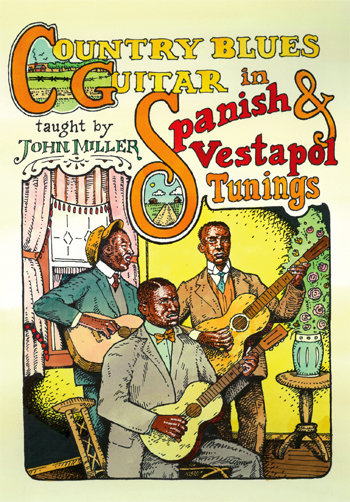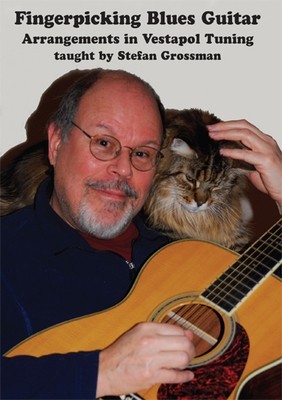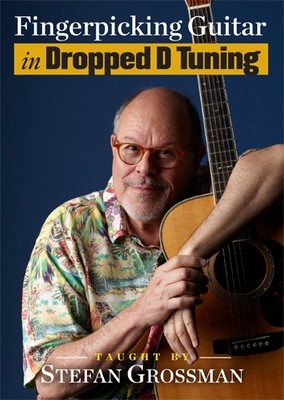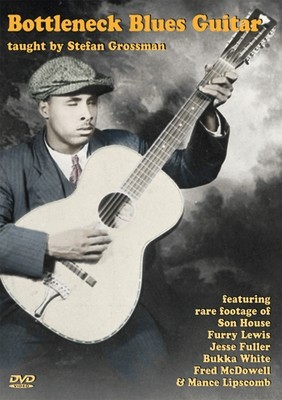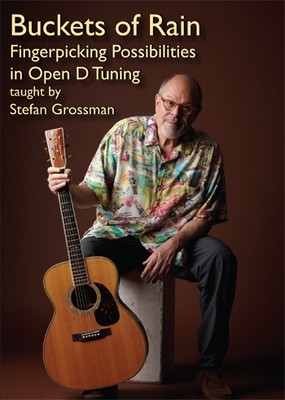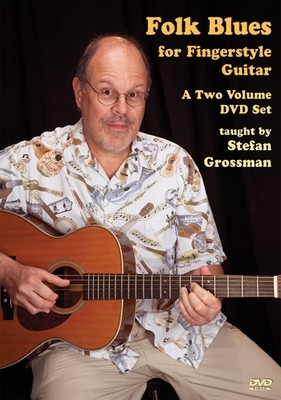
Country Blues Guitar in Spanish & Vestapol Tunings (2 DVD set) - taught by John Miller
The use of open tunings on the guitar to accompany singing is one of the hallmark sounds of the Country Blues. Unquestionably, the two open tunings that have been used most commonly in the Country Blues have been Spanish tuning, often called Open G tuning and Vestapol tuning, quite often called Open D tuning. For this 2-DVD lesson, we've chosen the names Spanish and Vestapol to designate these tunings, because in practice, Spanish tuning was not always tuned exactly to an open G chord and Vestapol tuning was not always tuned to an open D chord.
Each one of these tunings represents its own sort of sound universe, but what is really interesting to hear is the different approaches that different players took to the same tunings, and the different sounds that resulted. In each of these tunings, you'll encounter players whose approach was so melody-driven that it ends up sounding almost like slide guitar played without a slide, and at the opposite end of the spectrum, high concept, chordally sophisticated arrangements. We've purposely chosen the songs that are taught on the lesson to encompass as much of that sound spectrum as possible.
On Disc 1, the Spanish tuning lesson, we start by presenting an overview to the tuning, how it is set up, and where the foundational chord positions needed to play Country Blues in that tuning are located. Then we launch into the repertoire: Elizabeth Cotten's serene rendition of the hymn When I Get Home, Mississippi John Hurt's danceable Boys, You're Welcome, Teddy Darby's hypnotic Built Right On The Ground, Clifford Gibson's uptown Bad Luck Dice, Mance Lipscomb's ancient-sounding Willie Poor Boy and Kenny Baker's haunting Legend of the Whistling Brakeman.
On Disc 2, the Vestapol tuning lesson, we begin with the an overview that provides the sound of the tuning, the approach that is best suited to it, and the chordal positions needed to play Country Blues in it. Then we go to the songs: Tarheel Slim's instrumental No Time At All, Jimmy Lee Williams' churning locomotive Have You Ever Seen Peaches?, John Byrd's Old Timbrook Blues, Memphis Willie B.'s eerie Brownsville Blues, Blind Boy Fuller's driving Little Woman You're So Sweet, and Jesse Thomas' mind-bender Another Friend Like Me.
Instruction is offered with the kind of patient attention to detail for which John Miller's lessons have been acclaimed, and all of the original performances of the songs are included on the discs, as well as tab and standard notation and the lyrics to the songs. Learn the songs on these lessons and you'll be equipped not only to continue learning more songs in these tunings on your own, but perhaps even to create your own arrangements and songs in the tunings.
226 minutes • Level 2/3 • Detailed tab/music PDF booklet on the DVD
Review: Poll the old masters with this six-string inquiry: What's the lifeblood tuning for your country-blues guitar? Answering back from ancient everywhere - the dusty plains of Texas, Beale Street, Delta cotton fields, metro St. Louis, Georgia watermelon patches, Carolina tobacco - would come a flood of commonly shared responses: Spanish and Vestapol, often translated to lay audiences as Open G and Open D tuning, respectively. Twelve of those respondents even show off their wares here. Actually, John Miller shows off their wares. Patiently picking apart intriguing examples of what greatness those tunings are capable of, he then reassembles each song right before your eyes with slo-mo split-screen ease. Miller beams down through layers of bedrock blues with his x-ray specs singling out such greatness as Elizabeth Cotten's "When I Get Home," a hymn which magically slides without a slide. And its moral opposite in Jimmy Lee Williams' "Have You Ever Seen Peaches?," a rhythmically mesmerizing tongue twister of questionable purity. Without a single word, Bill Monroe Bluegrass Boy, Kenny Baker, and a D minor seventh chord haunt "Legend of the Whistling Brakeman." Mance Lipscomb loads up his "Willie Poor Boy" groove with eclectic verses about troublesome gals and wives, possums and mules. Yet the real poor boy is capo kingpin Clifford Gibson, rolling "Bad Luck Dice" in spite of goldenly ringing treble runs. Flush with fantastic material drawn as much from relative unknowns (like Tarheel Slim and John "Thunder" Byrd) as marquis headliners (John Hurt to Blind Boy Fuller), these how-to lessons instructively sprawl over two DVDs, one per tuning. But can Miller teach all their ancient rituals? Devilishly "getting greasy... yeah, grungy" over Memphis Willie B.'s eerie pitch-bending apparition, "Brownsville Blues," alone confirms he's the perfect man for the job. – Dennis Rozanski/Blues Rag
